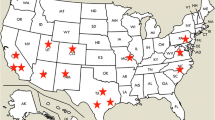Abstract
Epidemiologic information about snakebites in Ecuador is scarce. Snakebites are more common in the lowlands east of the Andes, in the Amazon basin. In the present study, a retrospective review of all (n = 142) snakebite admissions to Hospital Pio XII, a regional health center/hospital in the canton of Sucúa, Morona Santiago, Ecuador was carried out between the years of 1996 and 2000. Bites occurred more frequently during the months of March to May. The largest group of patients were in the 15- to 49-year-old range (52.5%), and agricultural workers were the most affected of all patients by occupation (> 40%). In most cases of snakebite, patients could not identify the type of snake that had bitten them. A small number of patients (n = 60, 42.3%) received some type of treatment prior to arrival at the hospital. Bites occurred most frequently on the left lower extremity (31.7%). Typical symptoms included pain and local edema at the snakebite site; generalized symptoms such as fever, nausea, and vomiting were less frequent. Most patients (almost 90%) received antivenin during hospitalization in addition to supportive care. The mean hospital stay was 4.3 days. More than 90% of all 142 patients recovered, about 8% with local abscesses. Mortality was 2.9% and occurred as a result of complications, including renal failure, respiratory failure, and disseminated intravascular coagulation.
Similar content being viewed by others
Author information
Authors and Affiliations
Rights and permissions
About this article
Cite this article
Praba-Egge, A., Cone, S., Araim, O. et al. Snakebites in the Rainforests of Ecuador. World J. Surg. 27, 234–240 (2003). https://doi.org/10.1007/s00268-002-6552-9
Issue Date:
DOI: https://doi.org/10.1007/s00268-002-6552-9




